Milbemycin oxime
- CAS NO.:129496-10-2
- Empirical Formula: 2C32H45NO7.2C31H43NO7
- Molecular Weight: 2194.78
- MDL number: MFCD09038910
- EINECS: 206-141-6
- SAFETY DATA SHEET (SDS)
- Update Date: 2024-11-19 23:02:33
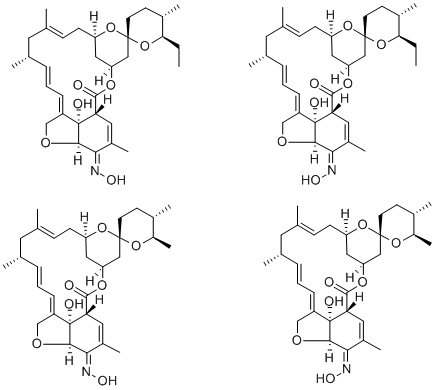
What is Milbemycin oxime?
The Uses of Milbemycin oxime
Milbemycin oxime is a semi-synthetic macrocyclic lactone prepared by the oxidation and oximation of a mixture of two natural products, milbemycin A3 and A4 (in ~30:70 ratio). Milbemycin oxime is used therapeutically for the prevention of intestinal parasites in dogs. Like the other milbemycin/avermectins, it was developed for intestinal parasite control in animals and acts by opening glutamate sensitive chloride channels in neurons of invertebrates leading to paralysis by hyperpolarisation of these cells and signal transfer blocking.
The Uses of Milbemycin oxime
controls intestinal parasites in animals
What are the applications of Application
Milbemycin oxime is a macrocyclic lactone that acts by opening glutamate sensitive chloride channels
Clinical Use
Milbemycin oxime (Milbemycin) is available as an oral chewable tablet (2.3–27 mg) for heartworm prevention in dogs and cats, as well as a 0.1% otic solution for treating ear mites. It is not available in a more concentrated dosage form, so overdoses are relatively rare[1].
Toxicology
The therapeutic dosages of Milbemycin oxime (milbemycin) for heartworm prevention are 0.5 mg/kg in dogs and 2 mg/kg in cats. Mild clinical signs of ataxia, hypersalivation, mydriasis, and lethargy have been documented in ivermectin-sensitive dogs dosed at 5 to 10 mg/kg. In a separate report, two ABCB1-defective dogs developed mild signs (ataxia) after being dosed repeatedly with milbemycin for demodicosis; one dog received 0.8 mg/kg 2 days in a row, and the other dog received 1.5 mg/kg daily for 13 days before developing signs. Mild clinical signs have been reported to develop in normal dogs at 10 to 20 mg/kg and in cats and dogs with suspected ABCB1 gene deletions greater than 5 to 10 mg/kg. The most common clinical signs reported include ataxia, tremors, lethargy, vomiting, mydriasis, disorientation, and hypersalivation[1].
Veterinary Drugs and Treatments
Milbemycin tablets are labeled as a once-a-month heartworm
preventative (Dirofilaria immitis) and for hookworm control
(Ancylostoma caninum). It has activity against a variety of other
parasites, including adult hookworms (A. caninum), adult roundworms
(T. canis, T. leonina) and whipworms (Trichuris vulpis). In
cats, milbemycin has been used successfully to prevent larval infection
of Dirofilaria immitis.
Milbemycin, like ivermectin can be used for treatment of generalized
demodicosis in dogs, but treatment can be significantly more
expensive. It is likely safer to use in breeds susceptible to mdr1 genetic
mutation (Collies, Shelties, Australian shepherds, etc.) at the
doses used for this indication, but neuro toxicity is possible. Older
dogs, those that have had a long duration of disease prior to treatment,
and dogs with pododemodicosis appear have a lower success
rate with milbemycin treatment.
References
[1] DVM, Valentina M. Merola, Paul A. Eubig DVM MS and MS. “Toxicology of Avermectins and Milbemycins (Macrocylic Lactones) and the Role of P-Glycoprotein in Dogs and Cats.” Veterinary Clinics of North America-Small Animal Practice 42 2 (2012): Pages 313-333.
Properties of Milbemycin oxime
| Melting point: | 169.6-177.4° |
| Flash point: | 412℃ |
| storage temp. | Store at -20°C |
| solubility | DMSO:100.0(Max Conc. mg/mL);91.13(Max Conc. mM) |
| form | A crystalline solid |
| color | White to off-white |
| Stability: | Hygroscopic |
Safety information for Milbemycin oxime
| Signal word | Warning |
| Pictogram(s) |
 Environment GHS09 |
| GHS Hazard Statements |
H410:Hazardous to the aquatic environment, long-term hazard |
| Precautionary Statement Codes |
P273:Avoid release to the environment. P391:Collect spillage. Hazardous to the aquatic environment P501:Dispose of contents/container to..… |
Computed Descriptors for Milbemycin oxime
| InChIKey | LKMMLHTWKLEARD-MGZQXKBQSA-N |
Milbemycin oxime manufacturer
New Products
(S)-3-Aminobutanenitrile hydrochloride 4-Methylphenylacetic acid N-Boc-D-alaninol N-BOC-D/L-ALANINOL Tert-butyl bis(2-chloroethyl)carbamate N-octanoyl benzotriazole 3-Morpholino-1-(4-nitrophenyl)-5,6-dihydropyridin- 2(1H)-one Furan-2,5-Dicarboxylic Acid S-2-CHLORO PROPIONIC ACID ETHYL ISOCYANOACETATE 2-Bromo-1,3-Bis(Dimethylamino)Trimethinium Hexafluorophosphate 4-IODO BENZOIC ACID 3-NITRO-2-METHYL ANILINE 1-(2,4-DICHLOROPHENYL) ETHANAMINE (2-Hydroxyphenyl)acetonitrile 4-Bromopyrazole 5,6-Dimethoxyindanone 2-(Cyanocyclohexyl)acetic acid 4-methoxy-3,5-dinitropyridine 1-(4-(aminomethyl)benzyl)urea hydrochloride 2-aminopropyl benzoate hydrochloride diethyl 2-(2-((tertbutoxycarbonyl)amino) ethyl)malonate tert-butyl 4- (ureidomethyl)benzylcarbamate Ethyl-2-chloro((4-methoxyphenyl)hydrazono)acetateRelated products of tetrahydrofuran

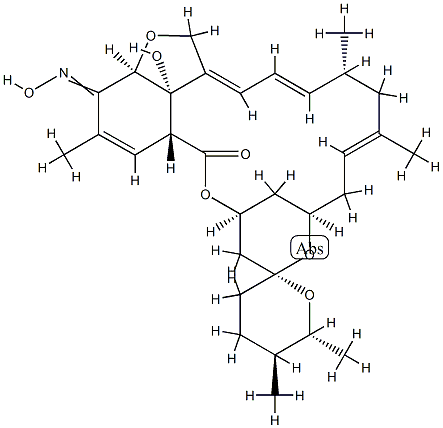

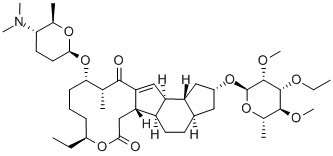
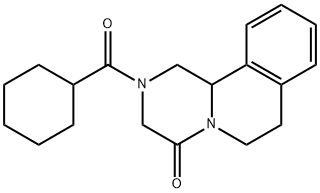
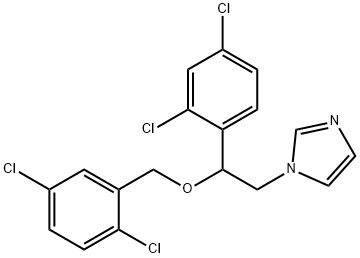


You may like
-
 Milbemycin Oxime 98%View Details
Milbemycin Oxime 98%View Details
129496-10-2 -
 Milbemycin oxime CAS 129496-10-2View Details
Milbemycin oxime CAS 129496-10-2View Details
129496-10-2 -
 Milbemycin oxime CAS 129496-10-2View Details
Milbemycin oxime CAS 129496-10-2View Details
129496-10-2 -
 1975-50-4 98%View Details
1975-50-4 98%View Details
1975-50-4 -
 2-HYDROXY BENZYL ALCOHOL 98%View Details
2-HYDROXY BENZYL ALCOHOL 98%View Details
90-01-7 -
 2-Chloro-1,3-Bis(Dimethylamino)Trimethinium Hexafluorophosphate 221615-75-4 98%View Details
2-Chloro-1,3-Bis(Dimethylamino)Trimethinium Hexafluorophosphate 221615-75-4 98%View Details
221615-75-4 -
 14714-50-2 (2-Hydroxyphenyl)acetonitrile 98+View Details
14714-50-2 (2-Hydroxyphenyl)acetonitrile 98+View Details
14714-50-2 -
 118753-70-1 98+View Details
118753-70-1 98+View Details
118753-70-1